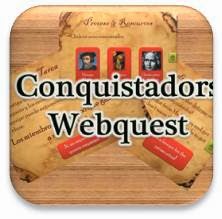This app, called Deep in the Rainforest , states that in it, "children will learn about the Amazon Rainforest through fun and games by traveling with Amanda. The journey begins when Amanda meets a native boy, Yapariwa, who is looking for his lost brother Atu. As they walk through the rainforest they will discover interesting facts about animals and learn important values of diversity and respect. Our story includes animated text to encourage children's listening and reading skills." It allows students to jump around and play different games while learning facts about the rainforest so it allows for differentiation as well. This is also available in SPANISH--a huge and rare plus as far as apps are concerned. It connects to the Core Curriculum's Module 2 on the rainforest as well so I hope to make use of it.
Another, by the same company, called Amazon Rainforest teaches specifically about the Amazon and the unique creatures that inhabitat it.
The Barefoot World Atlas App allows children to explore:
- A beautifully illustrated 3D globe with multimedia features, including zoom and animated icons
- Music and effects soundscapes for each region of the world
- 3D rotations of historial objects from the Royal Geographical Society
- Live country facts from Wolfram | Alpha
- Audio narration by acclaimed BBC TV presenter Nick Crane
- Enhanced graphics for the new iPad
- Available for iPad®, iPhone® and iPod touch®
-
Switch in seconds between English, Spanish, Catalan, French, German and JapaneseThis app is very individualized as well and allows students to explore the world in an interactive way.




